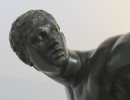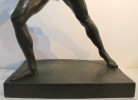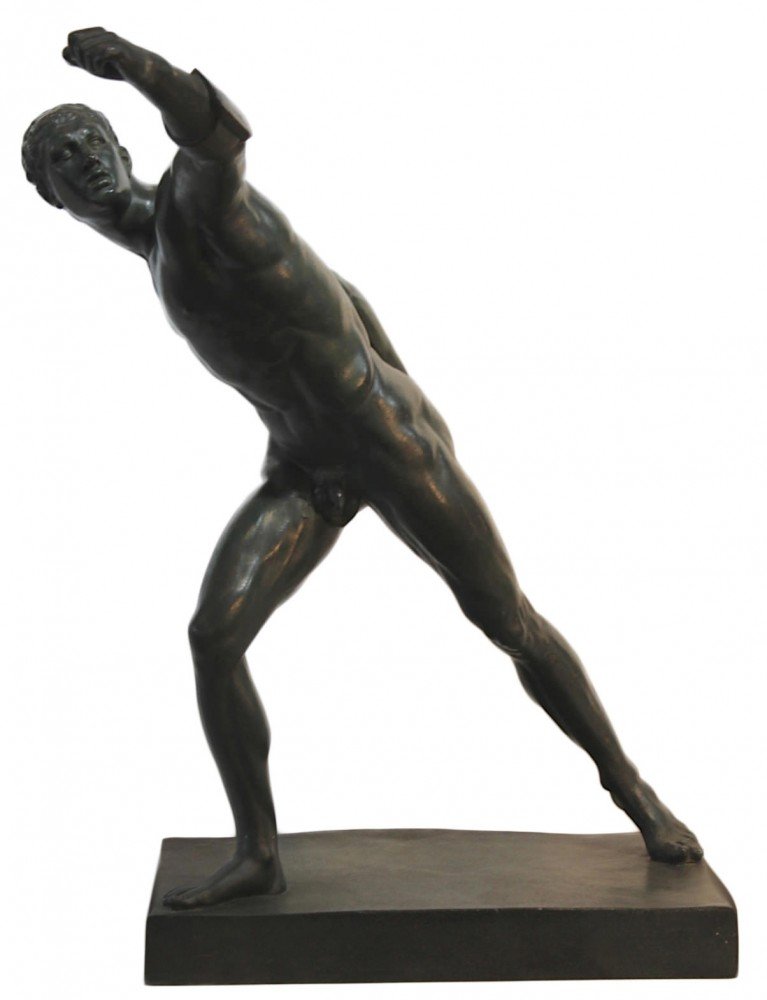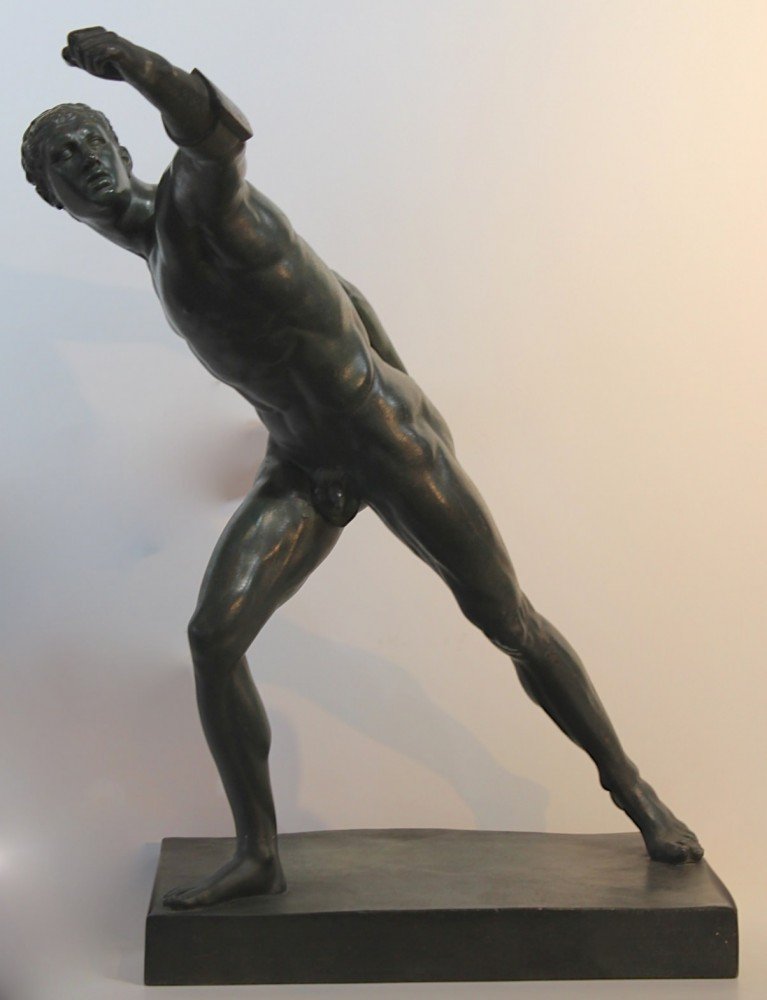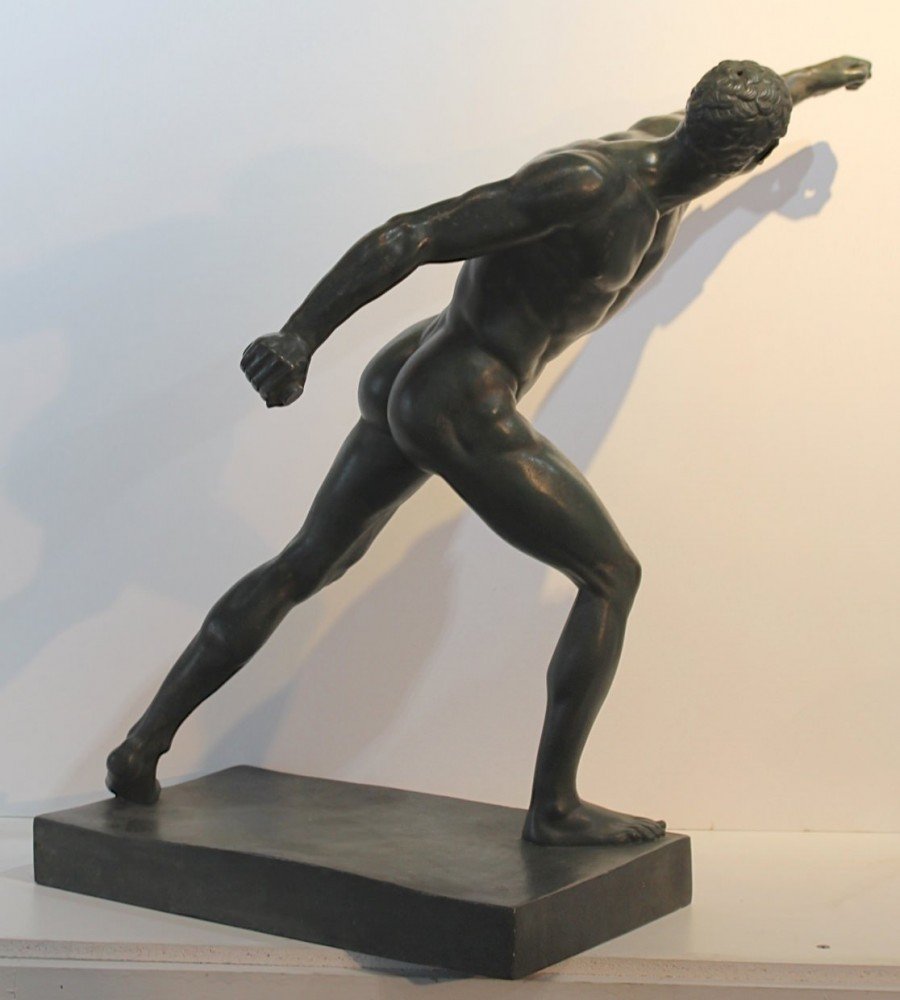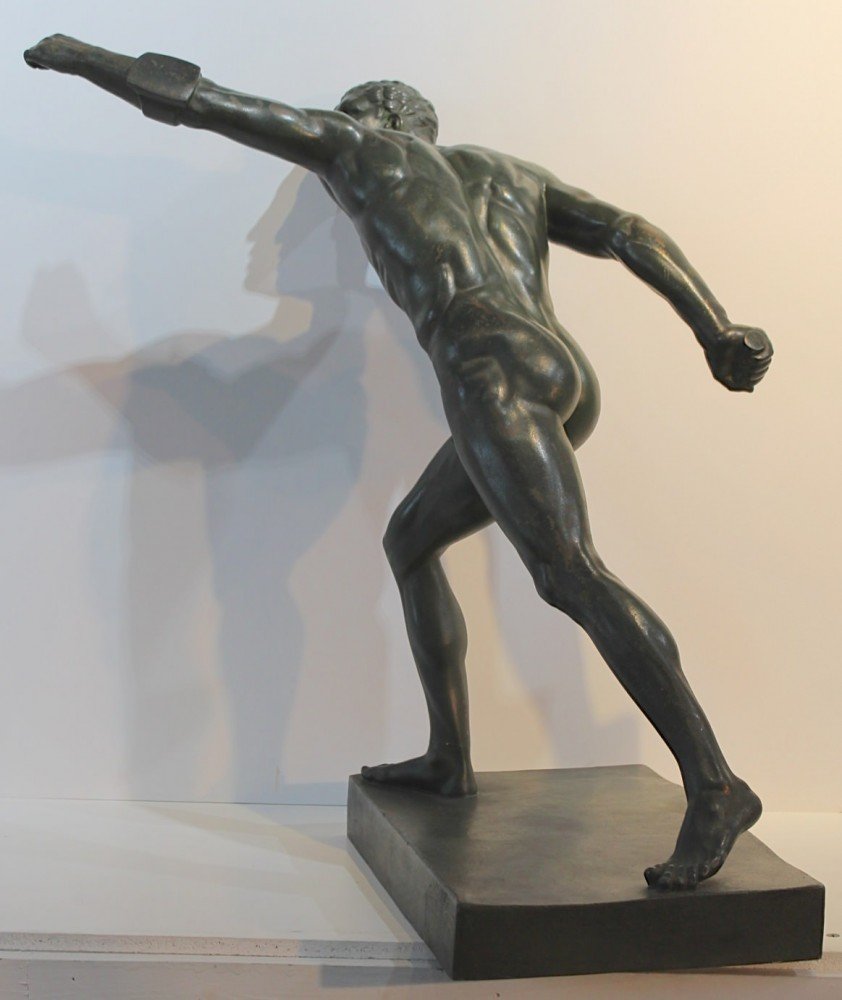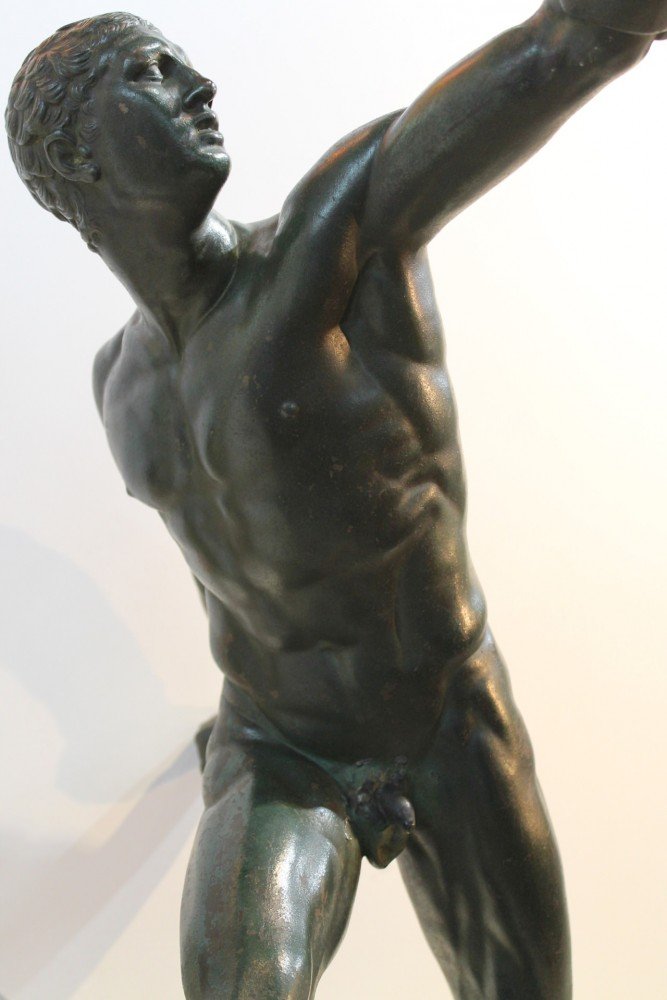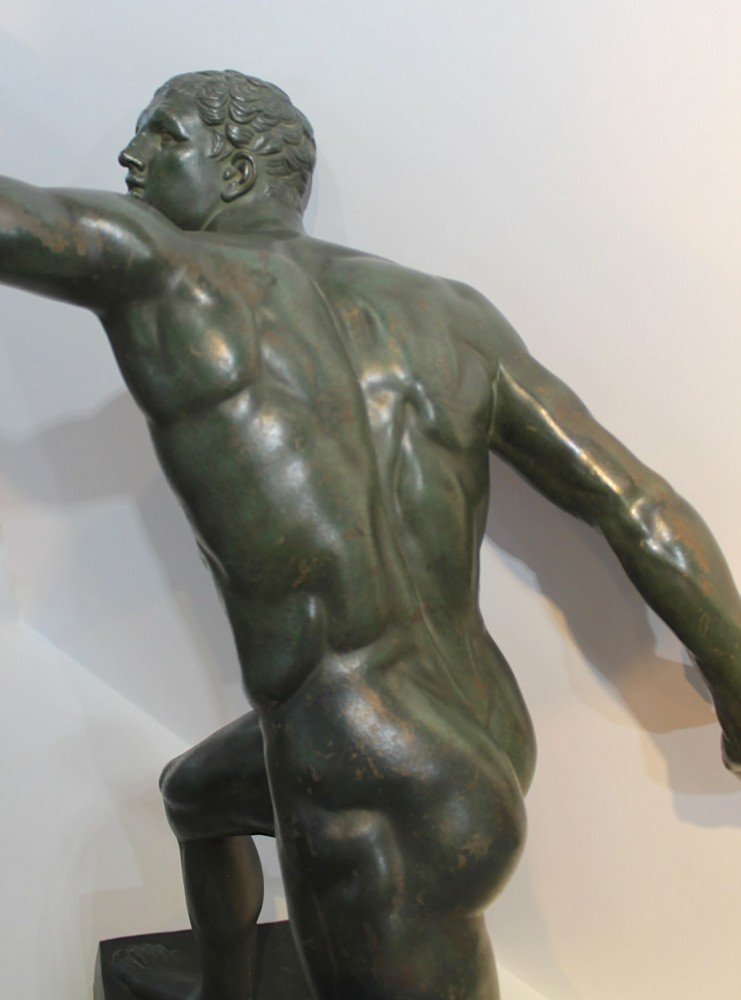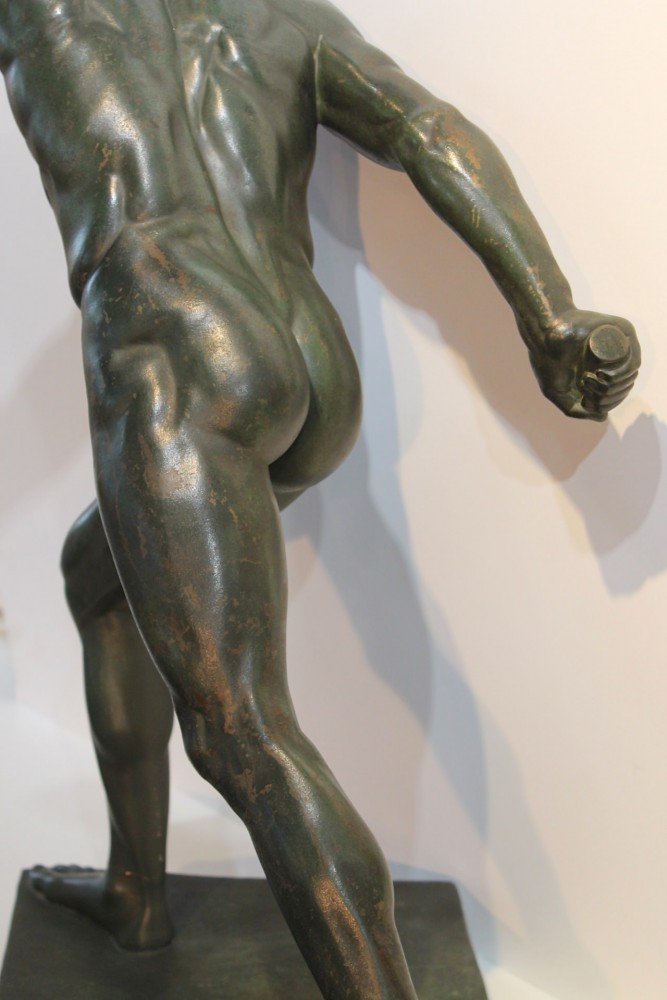Artist: 19th Century Italian School
Medium: Bronze with green patination
Dimensions:
27 x 18 x 26 inches
Description:
Since its discovery in the early seventeenth century, the Borghese Gladiatorhas been praised as an aesthetic model of the male nude in motion. It was endlessly copied, modeled and adapted by both modern and contemporary artists. The statue was unearthed south of Rome, at Anzio (ancient Antium), during excavations carried out under the aegis of Cardinal Scipion Borghese. The Cardinal added it to his collection shortly before 1611, and it was restored by Nicolas Cordier, who completed it by adding the right arm. In 1808, the statue left Italy for the Louvre, following the purchase of the collection by Napoleon I from his brother-in-law, Prince Camille Borghese. For a long time, it was erroneously thought that the figure was a gladiator (despite the fact that the Greeks did not hold gladiatorial circus entertainments), before the shield strap on its left arm identified him as a warrior. Our hero defends himself energetically, thrusting his torso forward in a movement that is both defensive and self-protective. Protected behind his shield, he prepares to riposte, his face turned sharply towards his opponent (perhaps a horseman?).
From the website of The Louvre, Paris http://www.louvre.fr/en/oeuvre-notices/fighting-warrior
Type of Work: Sculpture
Other works by 19th Century Italian School
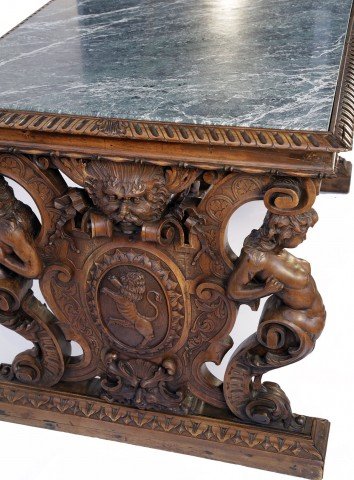
19th Century Italian Renaissance Style Marble Top Library Table 19th Century Italian School
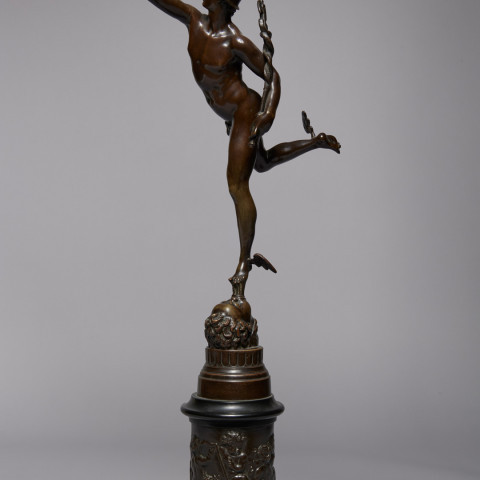
Mercury Standing on the Breath of Zeus 19th Century Italian School
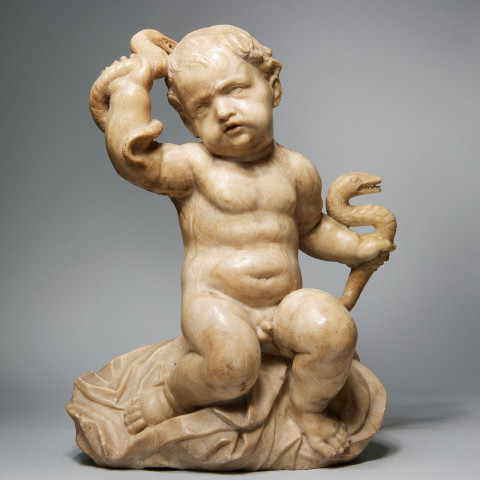
Infant Hercules Wrestling a Snake, 18th/19th Century 19th Century Italian School
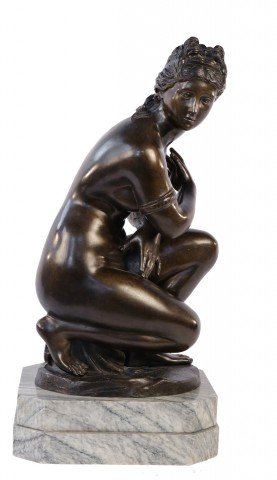
Bronze Figure of Crouching Venus, or The Naked Aphrodite 19th Century Italian School
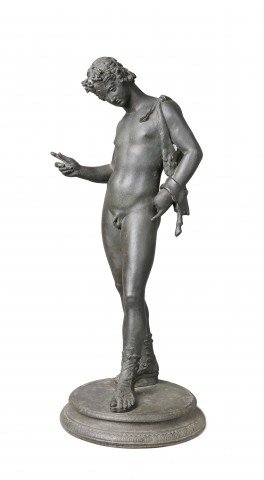
Grand Tour Bronze Sculpture of Dionysus 19th Century Italian School
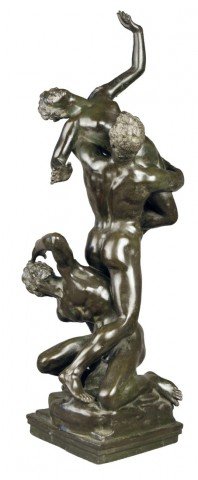
Rape of the Sabine Women, after Giambologna, c.1880 19th Century Italian School
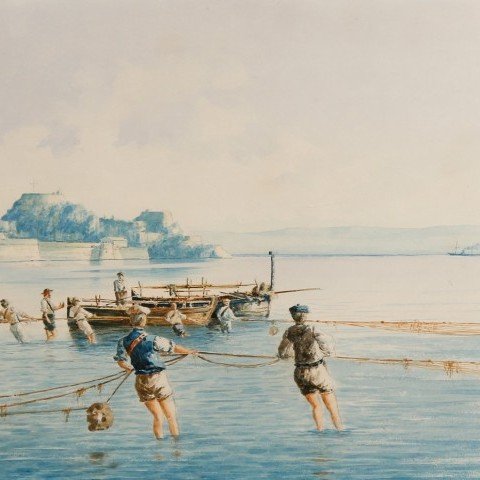
SOLD
Neopolitan Fishing Scene 19th Century Italian School
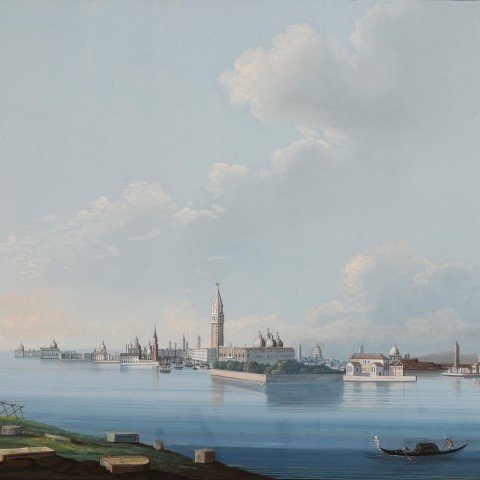
SOLD
Entrance to The Grand Canal 19th Century Italian School
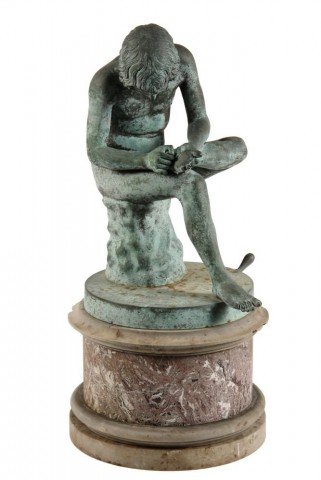
SOLD
Spinario (Boy Pulling a Thorn from his Foot), 1800 19th Century Italian School
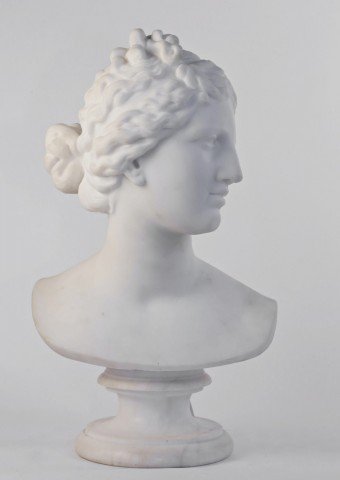
SOLD
Carved Marble Bust of the Goddess Aphrodite 19th Century Italian School
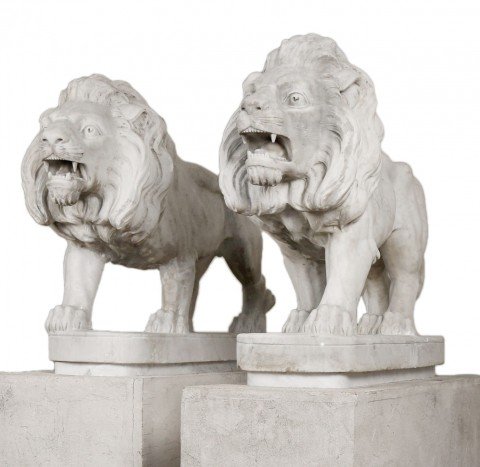
SOLD
Matched Pair of 19thc. Carrara Marble Italian Carved Lions 19th Century Italian School
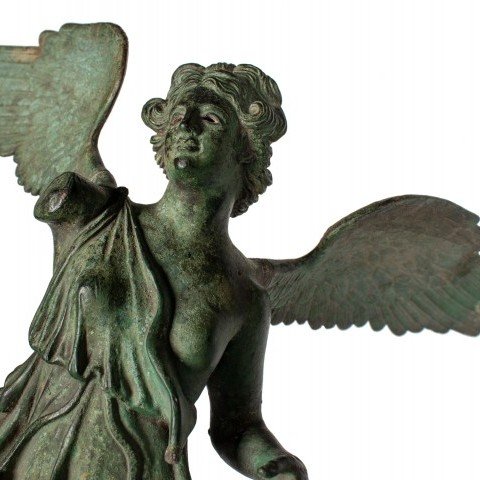
SOLD
Grand Tour Bronze Figure of Nike, or Winged Victory 19th Century Italian School






